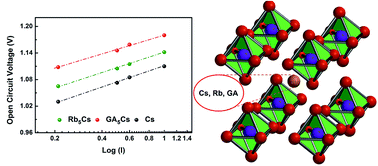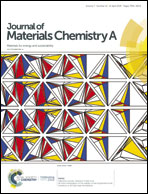Influence of A-site cations on the open-circuit voltage of efficient perovskite solar cells: a case of rubidium and guanidinium additives†
Abstract
Over the past few years perovskite based solar cell (PSC) research has undergone unprecedented rapid progress. This remarkable progress stems from the high absorption coefficient, large charge carrier diffusion length, low exciton binding energy and low trap density of the perovskite materials. In this work, we investigate the role of A-site cations in the open-circuit voltage (Voc) in the state-of-the-art perovskite solar cells using well-known rubidium (Rb) and guanidinium (GA) cations. Our results indicate that Voc of the perovskite solar cells is controlled by the nature of the A-site cations. We found that the reduced doping density in Rb and GA-based devices yields a wider junction suggesting that the effective charge extraction at the interface can affect the open circuit voltage (Voc) of the devices. This study illustrates a convenient way for in-depth characterization and better understanding of the working mechanism in efficient PSCs upon addition of an extra ancillary cation.



 Please wait while we load your content...
Please wait while we load your content...